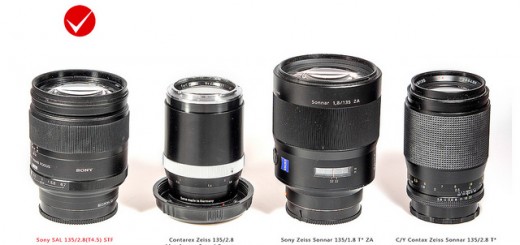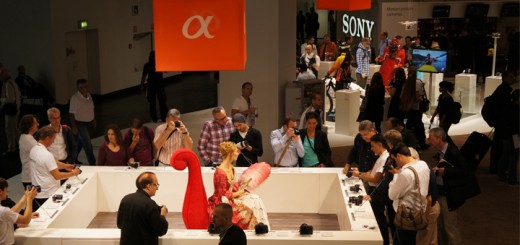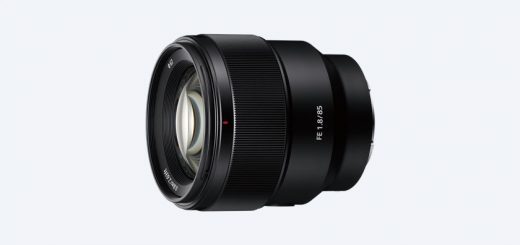Zeiss Milvus 50/1.4 vs Zeiss Otus 55/1.4 vs Zeiss Planar 50/1.4 – Comparative Lens Review
Conclusion
Before we come to the final word of this review, there is one thing, really important to mention – focusing. We already wrote about it in our 85mm review, but we should repeat it here, because it is very important to consider.
Simply said, it is enormously hard to focus this lenses, especially wide open in order to achieve critical sharpness. This applies mainly for the native bodies we tested lenses on – Nikon D800E and Nikon D810. Those modern digital cameras were not made for manual focus lenses and this creates biggest limitation for practical usage. Why should one pay 2000- 4000 EUR for the “perfect” lens, if she/he won’t be able to get most of it, because of inability to acquire “perfect” focus?
Zeiss have nice article on the focusing topic – http://www.zeiss.com/camera-lenses/en_de/website/photography/what_makes_the_difference/manual_focusing.html. They suggest to use LCD and magnification for the applications where critical sharpness is needed. In practice, using system for the portrait and holding camera in front of you just like a smart-phone is very uncomfortable and any sense of intimacy is lost. (Hoodman type viewfinder and similar devices doesn’t really help, they are rather cumbersome and shooting experience is closer to video recording).
This is not problem of Zeiss, it is the problem of DSLR producers or maybe even DSLR concept recently. Question is, if special focusing screens used in old – manual focus cameras will really help. The tolerance with recent hi-res sensors is so thin at pixel level, that even using LCD and magnification might lead to small focus shift and loss of full resolution potential.
Don’t be confused however, AF is not always best solution either. We are simply approaching the point where technology is going step ahead of human capability to control it and this might be very frustrating from time to time.
Both, Pavel and me were insecure most of the time during portrait session, if we managed to focus properly. Reviewing images on the LCD doesn’t really help, as the resolution of the display is limited. We are not talking here about missing focus completely, but it’s enough to shift it for just 0,1mm and output image of Otus will have similar sharpness as perfectly focused Planar.
Best solution that I was able to find, which gives me more keepers and more confident control of the focus, is using lenses on Sony A7x cameras. However, by using this system I lost beauty of optical viewfinder (for me it is a big thing to look through optical viewfinder when talking to my models, because I have entirely different feeling of intimacy and fluent interaction, than when using EVF) and with Otus and Milvus on rather small A7 body, balance was entirely front weighted.
Point of this writing about focusing issues is not to blame anyone, it’s just to raise the question – why do we need all that resolving power of lens and camera, if we are not really able to control it in most situations (unless shooting static subjects in LAB conditions).
Zeiss Otus 55/1.4 ZF.2 – Final Word
It was first Otus and one of the first lenses to be built without optical compromises from the start. It is best optically corrected lens in this focal length that I ever tested. Extremely sharp (when you hit the focus) across whole frame from f/1.4, this lens is great tool for shooting in low light or when shallow DOF is required.
Build quality is top-notch, except for the rubberized parts, which could be improved IMHO (collecting all sorts of dirt and scratches and questionable durability) and lack of weather protection. Focusing Otus lens is experience of its own and is something that every enthusiast should try once (at least in the shop :-))
Almost CA free, with great control of most other aberrations except coma and vignetting, Otus creates strongest 3D pop-up effect of all three lenses at comparable settings. Great micro-contrast and superb flare resistance, help the lens to deliver top quality images in most conditions.
Bokeh is nice but we have seen smoother at respective FL with pronounced “onion rings” in strong highlights. Rather heavy mechanical vignetting is causing “cat eye” highlights shaping toward image edges. Still, due to the explicit sharpness at f/1.4 already and smooth luminance transition in the highlights, this lens deliver specific and unique focused subject isolation with strong 3D effect.
The biggest disadvantage of Otus 55/1.4 is its price of course. Competition in this FL is tough and with its price point it will hardly ever touch interest of enthusiasts.
OTOH if you want sharpest lens with best controlled CA and amazing feeling of manual focus, and money is not the issue, Otus 55/1.4 is worth considering. While I felt in love with its bigger brother 85/1.4, and bought it after the testing, I am still thinking of 55…
Zeiss Milvus 50/1.4 ZF.2 – Final Word
In short, Milvus 50/1.4 is Otus without extensive CA correction. In the mid frame it is fully comparable with Otus, less so toward corners at wide apertures.
If you ever felt like lacking sharpness with Planar wide open, Milvus is great improvement in that regard. One of the key benefit is moisture and dust protection and de-clicking aperture. Only those features might push Milvus above Otus for many professional photographers, used to shot video and to work in harsh conditions.
I was slightly disappointed with Milvus focusing mechanism. Is it because the focus ring is basically whole lens barrel, or because too heavy glass elements are moving, or because weather protection sealing used in the gaps of the moving parts, I was missing the super smooth tactile feeling known from other Zeiss lenses (not to speak about Otus). Maybe this will improve with use, but out from the box, Milvus focusing experience was nothing to rave about. (Don’t get me wrong, it is still great and very precise, and it will done the job with perfection, it’s only feeling that I am talking about).
Milvus 50/1.4 is great alternative in this focal length, lens which should make most photographers happy with the purchase and very rational choice. While much cheaper than Otus 55/1.4, Milvus is not a cheap lens and it might have hard time to beat AF alternatives such as Sigma 50/1.4 Art or Canikon alternatives. Zeiss lens connoisseurs however, don’t have to think much longer.
Zeiss Planar 50/1.4 ZF.2 – Final Word
Planar 50/1.4 is an older design and it shows. It was originally designed for lower resolution medium and in the age when artistic value of the image was considered more important than MTF. Zeiss however kept it, together with Planar 85/1.4 in the production, as only two lenses form the “Classic” line. There are some good reasons behind, mainly because they have very specific rendering, preferred by some professionals (and enthusiasts). Pavel who helped me with this review is one of those photographers who would rather use Classic Planars, simply because he finds them more convenient for use and their rendering – more organic, film alike.
Truth is that all those under-corrected aberrations are adding to the lens character and that most are fading away once the lens is stopped to f/2.8 and smaller. This makes Planar more versatile too, because it can work well for naturally softened portrait and super sharp landscapes.
Build quality is top-notch and design is timeless classic. I am almost sure than in couple of years, both Otus and Milvus will look like funny Sci-fi from 60′ while this little Planar will still look like a cool retro lens.
Focus is smooth and precise, vignetting actually smallest between the three, colors are consistent with other two lenses, flare resistance give nice mixture of control and flaring, bokeh, while not smoothest is very specific.
Long life Planar, you still might be the lens of choice for many talented photographers.
As we already wrote, all three lenses are great tools, and we can’t say which one is better. We tried to give you as many comparable images as was possible for us to prepare in order to help you draw your own conclusion in case that you are considering purchase of one of them.
Don’t forget that following link – Flickr Collection Of Zeiss Otus vs Milvus vs Planar will take you to the Flickr albums, where you can explore most of the images posted here in full resolution, together with similar images captured with three Zeiss 85mm lenses.
>To help this page survive, your donation will be highly appreciated.
















regarding the manual focusing. I recently tried the Zeiss 85mm f/1.4 Milvus with the new D5 and I think that the the smaller focus points may make it possible to manual focus with the lens. Unfortunately, I did have a few issues, for some reason the focus point wasn’t visible for some reason on the D5, when manually focusing, I was told that the camera didn’t have release firmware. But when I reviewed the shot, it did show where the focus point was placed and the image did look sharp. So fingers crossed it is a big improvement.
Great, let us know how it works for you at full opened aperture, once you manage to fine tune it.
Cheers,
Viktor
I don’t own the D5, so it might be a while, I do want to try it with the D500, to see if the camera will manual focus accurately with the added pixel density of the camera, which will be closer to a D820 (I am guessing it will have more than 36mp).
Where would you put the Zeiss 50mm makro-planar in this equation of Milvus, Otys and classic planar? I see you have done a review of macro 50mm lenses but I believe the classic makro-planar belongs here due to f2 speed and focal length.
Personally I’m impressed that a planar design performs so well wide open at f2 but I don’t know how it compares to the new Milvus. The Otus, I know what to expect as I have 135mm f2 APO.
Hi Nat,
I haven’t compare macro lenses directly, I reviewed Milvus 50/14 and compared it with Otus 55 and Classic Planar 50. Macro Planar 50/2 was optimized for the short distances where it achieves very good resolution figures in the center of the frame. As a most macro lenses it has rather flat focus field and very long focus thread. I don’t know where I will put it in the above mentioned comparison, because I didn’t test it for other usage than product shots (mainly short working distances). I am very happy with the lens for that type of work.
Hope it helps,
Viktor
Thank you for your reply. I guess it’s apples to oranges in a way. People used to compare makro-planar to the f1.4 classic back when there were only two Zeiss 50mm lenses. Nowadays it’s 4 50mm lenses from Zeiss alone not to mention the offerings from third parties such as Tamron Sigma and Nikon already has more than 10 lenses in the 50mm range.
So far I’m happy with 50mm f2 zf as a general purpose lens. Zeiss 25mm f2 is slightly superior with off center resolution and coma (but it is a distagon that has aspherical and anamalous elements ). The 25mm f2 is then trashed by 135mm f2 APO if I attempt a technical comparison and go off-focus and off-axis.
Hi Viktor, so I finally got to test the 85 milvus vs. the loxia side by side. I can’t tell you which is sharper. What I can tell you is that I purchased milvus 85 and it’s on its way – what a gorgeous lens!
Anyway, I’m also thinking of picking up the milvus 50. I understand its optical pros/cons about as well as I can based off your literature/testing (please keep up the great work!), and others.
What I’m curious about is the feel of the focus on the milvus 50. I was concerned about the stiffness on 85 before I got it, but it does not bother me. Is the 50 focus stiffer than the 85?
Hi Micah,
sorry for the late reply. Congrats on your new lens, Milvus 50 has same focus stiffness as 85, don’t worry.
Cheers,
Viktor
thank u very much for this review, i am art photographer and user of 50mm 1.4 planar ZE and love it much
Actually Zeiss lenses aren’t that hard to nail focus with. You need to train first but after that it’s a lot easier.
Don’t trust the red focus point blink, instead look for focus/ae lock in the camera viewfinder.
Hi Gustav and thank you for the opinion. I don’t trust red blinker, but at open apertures, it is very difficult to nail eyeball instead of eyebrows in my experience. Could be just me though…
Cheers,
Viktor